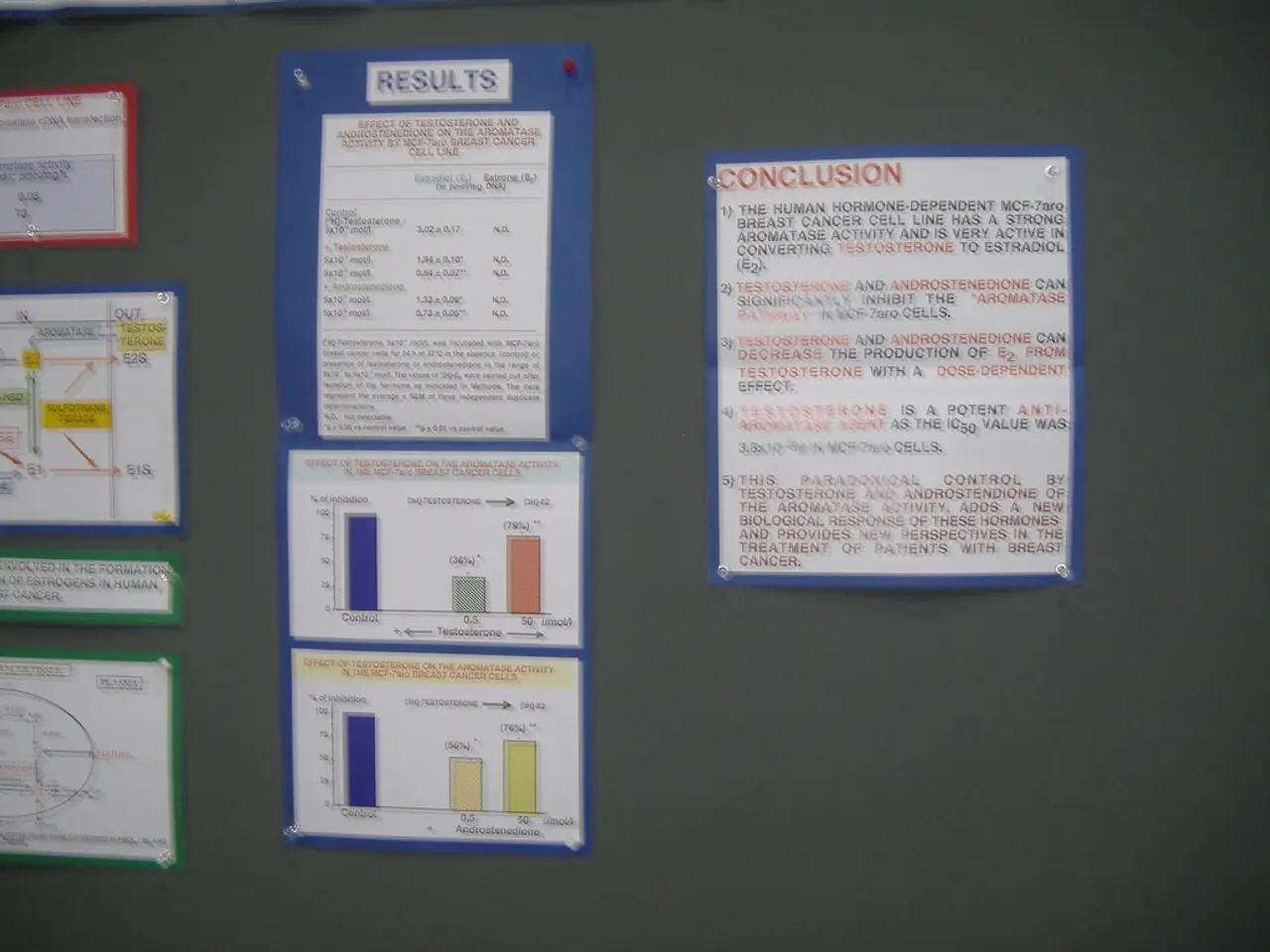Bracing for a Downturn: Big Banks Get the Green Light from the Fed
Major Financial Institutions Prove Resilient Amid Severe Economic Downturn, According to Fed's Yearly Stress Examination
The Fed's latest assessment of the banking sector offers a reassuring message: even in an extreme economic downturn, top banks such as JPMorgan Chase, Wells Fargo, Citigroup, and Bank of America are prepared to stay afloat and continue lending to households and businesses.
Stressing Out the System
Each year, the Federal Reserve designs a hypothetical financial catastrophe to test whether the largest banks can survive such turmoil without relying on government support. The latest scenario involved a brutal recession, with an unemployment rate peaking at 10%, stock prices plunging 50%, and housing and commercial real estate values taking a 30% hit.
The banking system would face losses of $550 billion under this testing, as credit card users, businesses, and other borrowers defaulted en masse. Despite these staggering losses, all banks under review would preserve sizable cushions comfortably surpassing the minimum requirements set by the Fed.
Tides of Change
The test results arrive as the Fed considers updates to the stress tests that will likely favor the banking industry. Critics suggest that the current process is shrouded in mystery, making it difficult for banks to provide consistent lending. Nevertheless, some argue that this layer of uncertainty is essential for rigorous testing and limiting banks' ability to circumvent the system.
Industry groups challenged the Fed's stance on stress tests in December, but the legal battle has since tapered off as the central bank mulls changes to the annual exams. In the meantime, the Fed is promising to enhance transparency by releasing modeling information ahead of time and reducing year-to-year volatility through a two-year outcome averaging system.
Want to turbocharge your trading? Head over to Pepperstone.com!
Past, Present, and Future
Recent updates to the Federal Reserve's stress tests include:
- Model consistency and adjustments
- Clarified treatment of private equity exposures
- Enhanced data reporting and smoother expense projections
- Independent model validation and monitoring
- Consideration of bank-specific events
- Timely publication of methodology documents
These modifications aim to increase transparency and reduce volatility in the stress tests, making them more accurate and reliable tools for measuring the banking sector's resilience.
A Discordant Chorus
While some praise the results of the stress tests as evidence of the industry's strength, others criticize them as being too lenient, having a flawed design that fails to capture the true risks of a downturn. The issue remains a contentious one as authorities and stakeholders seek to strike a balance between maintaining robust financial institutions and protecting the public interest.
[1] Federal Reserve. (2025). 2025 Stress Test Methodology. Retrieved from https://www.federalreserve.gov/supervisionreg/stress-tests/
[2] Financial Services Forum. (2025). Stress Test Results: Confirming the Strength of the Largest U.S. Banks. Retrieved from https://financialservicesforum.org/wp-content/uploads/2025/06/FINAL_STRESS_TEST-RESULTS_PR-FINAL-20250625.pdf
[3] Better Markets. (2025). Stress Tests and Implications for Public Policy. Retrieved from https://bettermarkets.com/wp-content/uploads/Stress-Tests-and-Implications-for-Public-Policy.pdf
- The stress tests, designed by the Federal Reserve, demonstrate that even in an extreme economic downturn, major banks like JPMorgan Chase, Wells Fargo, Citigroup, and Bank of America possess ample liquidity, enabling them to continue trading and lending to households and businesses.
- Controversy surrounds the stress tests, with critics suggesting that the process is overly complex, thereby limiting consistency in lending, while industry groups argue that some level of mystery is essential for thorough testing and preventing banks from circumventing regulations.
- In response to these criticisms, the Federal Reserve has implemented updates to the stress tests, such as model consistency and adjustments, clarified treatment of private equity exposures, enhanced data reporting, smoother expense projections, independent model validation, and consideration of bank-specific events, all aimed at increasing transparency and reducing volatility.
- Meanwhile, various authorities and stakeholders are engaged in a contentious debate over the adequacy of the stress tests, with some lauding the results as evidence of the banking industry's resilience and others criticizing them as being overly lenient and flawed in their assessment of the risks associated with a downturn.
- A disciplined approach to personal finance, including responsible investing, wealth management, and understanding the intricacies of finance, could provide individuals with the means to weather economic downturns and safeguard their financial well-being.







